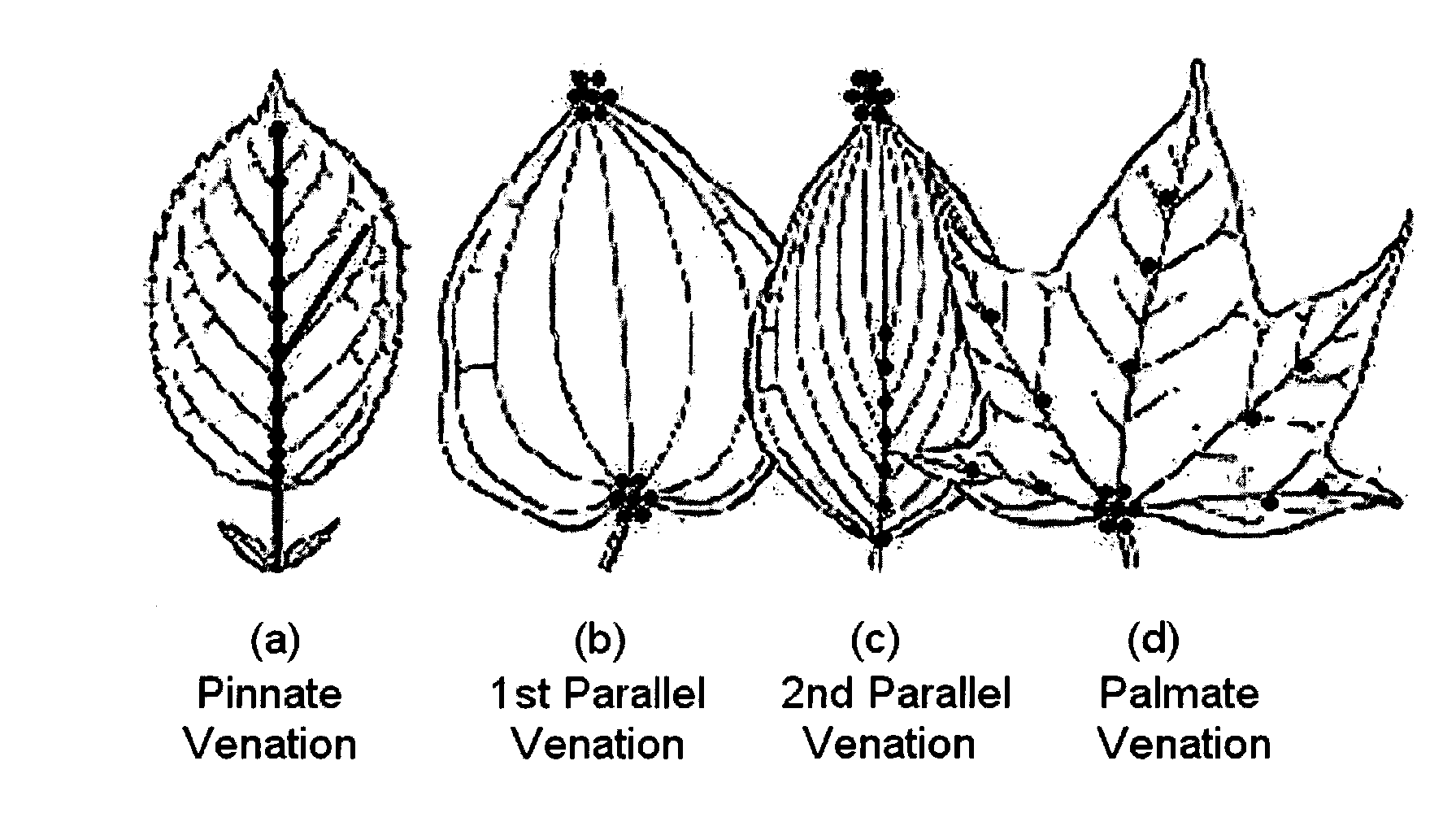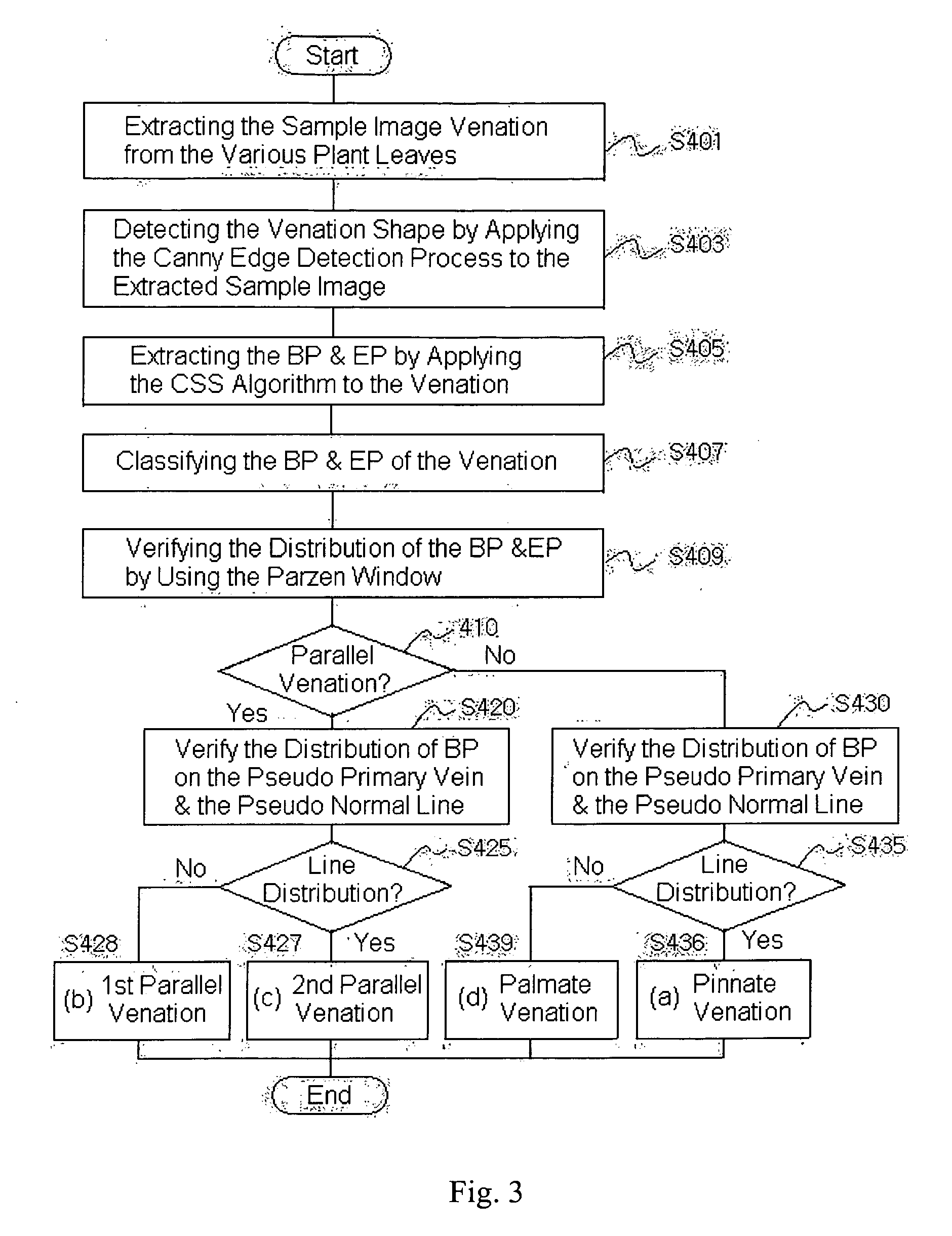Method for classifying leaves utilizing venation features
a technology of venation and plant leaves, applied in the field of plant leaves classification, can solve the problems of difficult to retrieve certain information about plants, and difficult to retrieve the correct plant information with this method
- Summary
- Abstract
- Description
- Claims
- Application Information
AI Technical Summary
Problems solved by technology
Method used
Image
Examples
Embodiment Construction
[0028]Hereinafter, a method for classifying plant leaves by utilizing the feature points, in particular Branching Points (BP) and Ending Points (EP) of the present invention is described in detail with reference to the accompanying drawings.
[0029]FIG. 1 represents the Data Processing Computer System for classifying various plant leaves by utilizing the feature points. FIG. 2 represents the four types of leaves having various feature points of the venation.
[0030]As represented in FIG. 1, the system for classifying plant leaves by using the venation features is comprised of a Data Processing Computer (100), a network (200) and a user computer (300).
[0031]The Data Processing Computer (100) further comprises an interface unit (110), input unit (120), retrieval unit (130), analysis unit (140), output unit (150), storing unit (160) and controlling unit (170).
[0032]The interface unit (110) is capable of exchanging the specific plant information with the user computer (300) through the netw...
PUM
 Login to View More
Login to View More Abstract
Description
Claims
Application Information
 Login to View More
Login to View More - R&D
- Intellectual Property
- Life Sciences
- Materials
- Tech Scout
- Unparalleled Data Quality
- Higher Quality Content
- 60% Fewer Hallucinations
Browse by: Latest US Patents, China's latest patents, Technical Efficacy Thesaurus, Application Domain, Technology Topic, Popular Technical Reports.
© 2025 PatSnap. All rights reserved.Legal|Privacy policy|Modern Slavery Act Transparency Statement|Sitemap|About US| Contact US: help@patsnap.com



